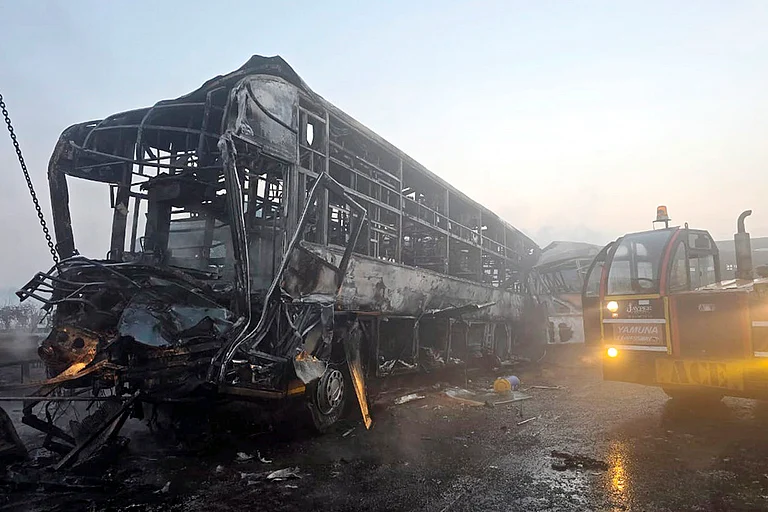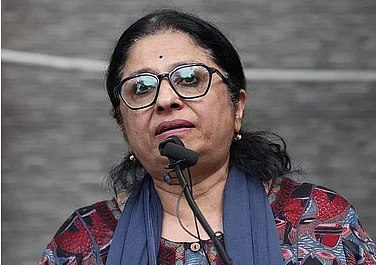When American photojournalist Mary Ellen Mark (1940-2015) froze frames on the sex workers and their patrons at Mumbai’s Falkland Road in 1978, it marked the fulfilment of a wish she had harboured for a decade: to somehow “penetrate the superficial view” of Falkland Road, a lane in Kamathipura. She had first arrived in the city in 1968 on an assignment as the leading photographer with Magnum, an international agency, and was deeply struck by the images of “cage-girls” peeping out of the windows of their grimy hovels. The curiosity of a firang woman about the prostitutes was met with hostility and suspicion from Madams, as the pimps or brothel keepers are colloquially called. For ten years, these images haunted Mary Ellen till she revisited these bylanes. She spent several months here, getting herself immersed in the rhythm of life in the red-light area. In the intervening years, she had come to India eleven times, trying all the while to earn the trust of her subject.
In her quest to gain a fuller understanding of the prostitutes, Mary Ellen resisted journalistic froideur in order to see the street women as “genuine human beings with real feelings and real dignity”. Her series on Kamathipura resulted in the photobook, ‘Falkland Road: Prostitutes Of Bombay’ (Alfred A. Knopf, 1981). Each frame in the book is imbued with palpable empathy; her gaze takes the women in the flesh trade beyond the indignities of their work, and humanizes them. Putla, a thirteen-year-old prostitute who was sold to the brothel by her mother, features on the book cover, wearing nothing except a silver necklace and a few bangles on her wrist — her sad, kohled eyes tell the story of a life in hell. Mary Ellen’s frames, even of intertwined bodies, do not betray any voyeuristic intent; instead they give us a sense of the darkness that lies beneath the garishness of a world where selling bodies is a survival strategy. “Through Mary Ellen’s lens, street prostitution and dim brothels popped in vibrant hues of blue and green. The dingy rooms and drawn curtains gave a sense of place. The expressions on the women in them — somber, helpless and debilitated — brought that place to life,” wrote Andrew Boryga in ‘NPR’ after Mark’s death in May 2015.
Though Mary Ellen wrote 20 books, including two other titles on India (‘Photographs of Mother Teresa’s Missions of Charity in Calcutta’ and ‘Indian Circus’), ‘Falkland Road’ remained a significant work in her canon. It contains 65 photographs made over the period of six weeks. The blurbs describe these images as “beautiful, electric, shocking and remarkable for their emotional power and for the visceral brilliance of their colour.” Publisher Knopf saw the book as “an astonishing work of insight into a raw and frightening world, made accessible by the completeness of the photographer’s involvement, by her humanity, and by the way she captures the variety of individual life and the colour, passion, and tenderness that still abide there.”
Mary Ellen’s photographs and photo essays were published in ‘The New Yorker,’ ‘Life’, ‘New York Times Magazine’, ‘Rolling Stone’, ‘Vanity Fair,’ and several other publications. The pictures she made during her travels spanning over four decades reveal her humanist vision. At a time when prostitution was considered to be a taboo and most Indian photographers looked at it from a distance, Mark was among the first to tenderly evoke the inner lives of prostitutes. “My book is a metaphor for prostitutes not only in Falkland Road but for prostitutes all over the world,” Mark said in a 2014 interview. Her iconic shots are testimony not just to her photographic prowess but also to her humanity and compassion. They embody her lifelong mission to document the lives of the dispossessed and the damned.


























